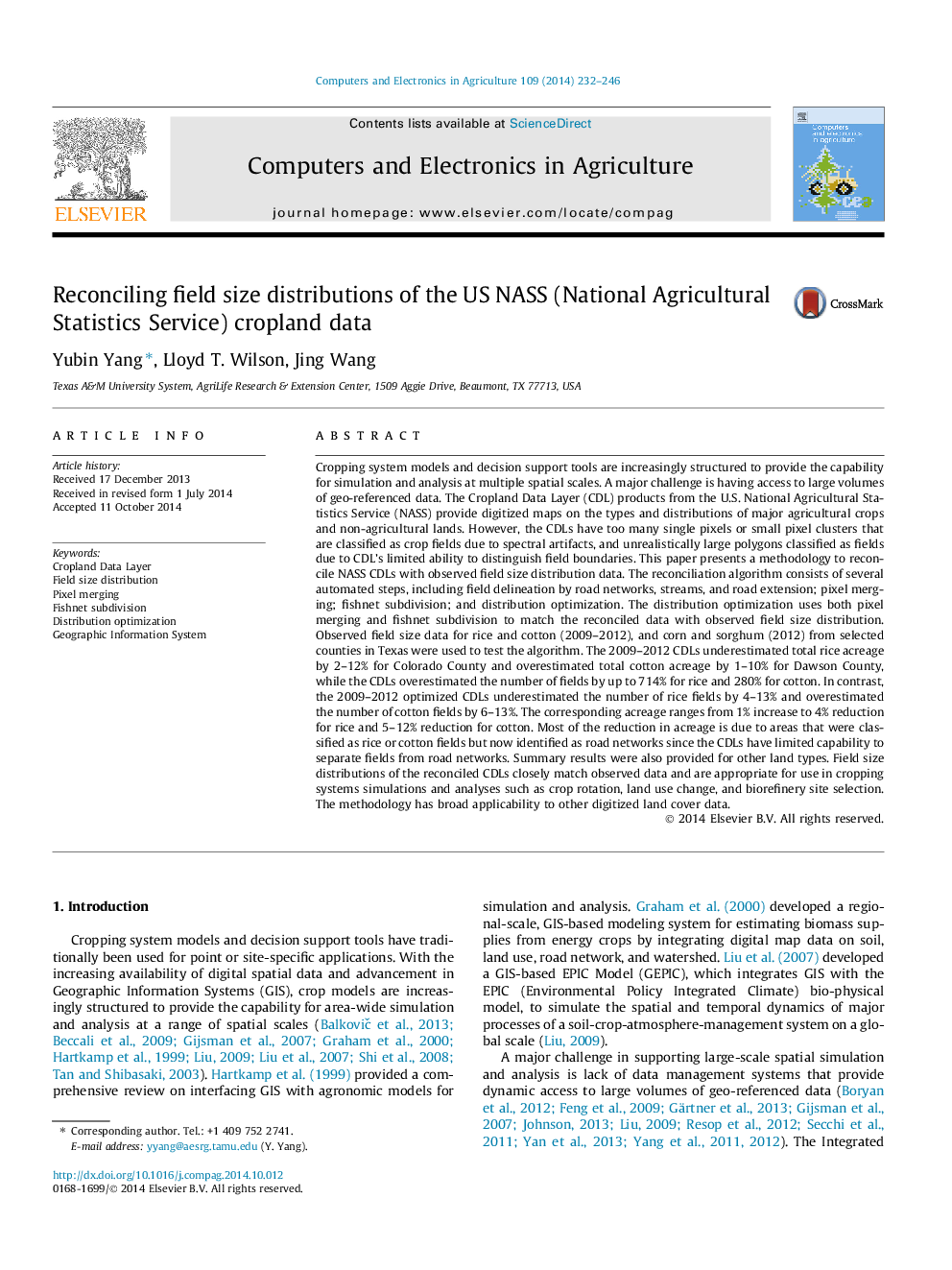| کد مقاله | کد نشریه | سال انتشار | مقاله انگلیسی | نسخه تمام متن |
|---|---|---|---|---|
| 84244 | 158870 | 2014 | 15 صفحه PDF | دانلود رایگان |

• A novel methodology to match NASS cropland data with actual field size distributions.
• Automated GIS procedures to process cropland data from county to national scale.
• Final reconciled data matches actual crop-specific field size distributions.
• The resulting cropland dataset is more suitable for spatial simulation and analysis.
• The methodology has broad applicability to other digitized land cover data.
Cropping system models and decision support tools are increasingly structured to provide the capability for simulation and analysis at multiple spatial scales. A major challenge is having access to large volumes of geo-referenced data. The Cropland Data Layer (CDL) products from the U.S. National Agricultural Statistics Service (NASS) provide digitized maps on the types and distributions of major agricultural crops and non-agricultural lands. However, the CDLs have too many single pixels or small pixel clusters that are classified as crop fields due to spectral artifacts, and unrealistically large polygons classified as fields due to CDL’s limited ability to distinguish field boundaries. This paper presents a methodology to reconcile NASS CDLs with observed field size distribution data. The reconciliation algorithm consists of several automated steps, including field delineation by road networks, streams, and road extension; pixel merging; fishnet subdivision; and distribution optimization. The distribution optimization uses both pixel merging and fishnet subdivision to match the reconciled data with observed field size distribution. Observed field size data for rice and cotton (2009–2012), and corn and sorghum (2012) from selected counties in Texas were used to test the algorithm. The 2009–2012 CDLs underestimated total rice acreage by 2–12% for Colorado County and overestimated total cotton acreage by 1–10% for Dawson County, while the CDLs overestimated the number of fields by up to 714% for rice and 280% for cotton. In contrast, the 2009–2012 optimized CDLs underestimated the number of rice fields by 4–13% and overestimated the number of cotton fields by 6–13%. The corresponding acreage ranges from 1% increase to 4% reduction for rice and 5–12% reduction for cotton. Most of the reduction in acreage is due to areas that were classified as rice or cotton fields but now identified as road networks since the CDLs have limited capability to separate fields from road networks. Summary results were also provided for other land types. Field size distributions of the reconciled CDLs closely match observed data and are appropriate for use in cropping systems simulations and analyses such as crop rotation, land use change, and biorefinery site selection. The methodology has broad applicability to other digitized land cover data.
Journal: Computers and Electronics in Agriculture - Volume 109, November 2014, Pages 232–246